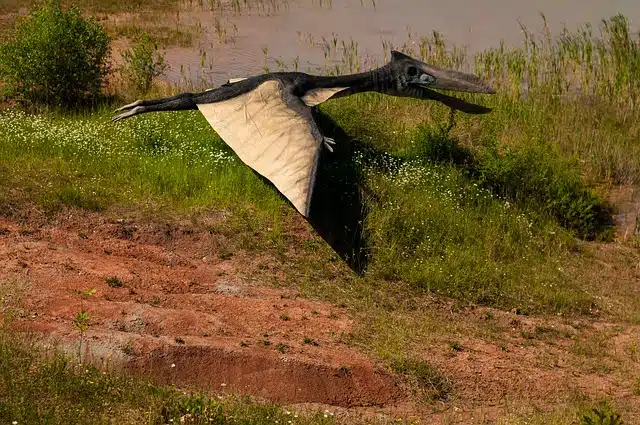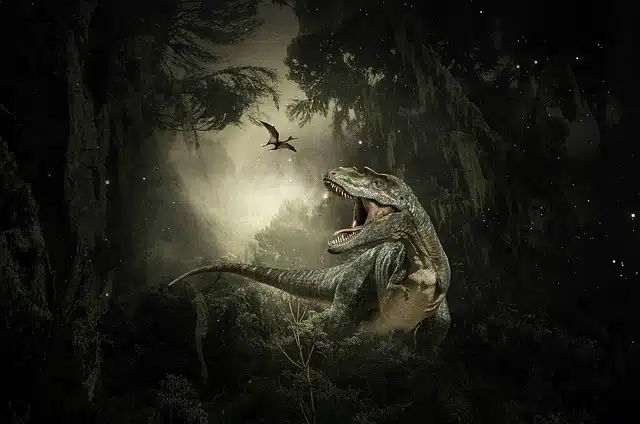
It is believed that an adult pterodactyl has never been found.
A pterodactyl is an extinct flying animal . It is a prehistoric reptile that, according to fossils found in various regions, had membranes similar to those that bats have today.
General characteristics
Pterodactyls lived about 150 million years ago, in the Jurassic period. His remains have been found in different areas of the European continent and Africa .
It is estimated that the pterodactyl measured approximately 1.5 meters and had an elongated skull, with almost a hundred teeth in its mouth. Their wings, meanwhile, could measure one meter and were membranes composed of muscle and skin .
To move on the surface, pterodactyls crawled with their hind legs while supporting their wings. As for its flight, scientists think that it was slow due to the aerodynamic characteristics of the species .
It should be noted that these reptiles were carnivorous . It is believed that they fed mainly on invertebrate species and fish.
Your discovery
The discovery of fossilized pterodactyl eggs allowed the development of a study that provided clarifying results about this animal. For specialists, pterodactyls resorted to community nests to raise their offspring. The young, on the other hand, could walk at birth, although they were not prepared to fly due to the lack of development of their wings .
It is important to mention that pterodactyls were not dinosaurs , but were part of different evolutionary groups. Crocodiles and snakes are among the closest living relatives of these long-extinct reptiles.
Differences according to their development
Just as we can notice in other pterosaurs found by paleontologists, pterodactyls usually exhibit marked differences in their physical characteristics according to their age or how mature they were at the time of death. There are several factors that vary in the fossils of these animals, and among them we can highlight the following: the number of teeth; body size; the shape and size of the skull; the proportions of its extremities.
Throughout history, this particularity has led to fossils of different ages or stages of growth being confused with remains of different species or, rather, as evolutions of the same. It was only after scientists carried out in-depth studies with advanced methods that they were able to understand that it was a single species, and that its individuals simply showed a growth curve with many changes.
Regarding the number of teeth, today we know that pterodactyls had very few in their youth (the minimum number known so far is fifteen ) and that their base was quite broad. As the years went by, the base narrowed and the number multiplied until it exceeded ninety teeth .
Age groups
Three groups of pterodactyls have been established according to their age, something that was based on the differences and changes mentioned above. Let's start with the first group, whose specimens have skulls with a length ranging from 15 to 45 millimeters .

Pterodactyls were not dinosaurs, although they appear in films and documentaries along with them.
These dimensions increase until they double in the second group, which contains pterodactyls whose skulls can measure between 55 and 95 millimeters . It should be noted that we are still in a stage of relative immaturity; In fact, although at one point in history some of them were classified as "adults", scientists eventually determined that all of them are immature.
In the third group are those belonging to the species Pterodactylus antiquus , the only one currently recognized, and others that were once part of the Pterodactylus kochi . Even specimens in this group are considered immature, as paleontologists have never found an adult or fully grown one.
